英语时态8种基本时态讲解.ppt
- 格式:ppt
- 大小:320.00 KB
- 文档页数:44



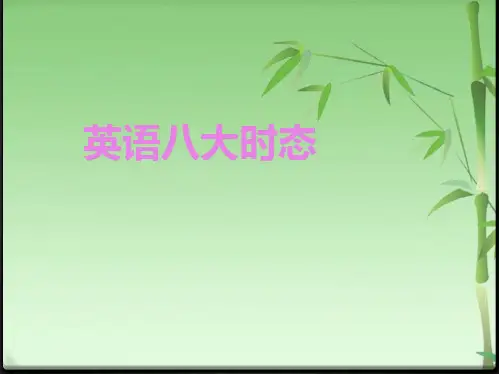
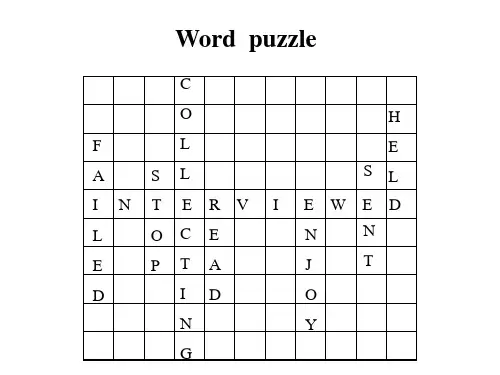
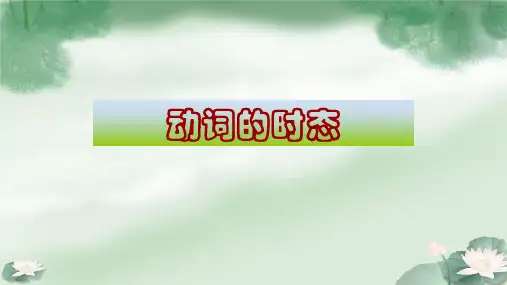

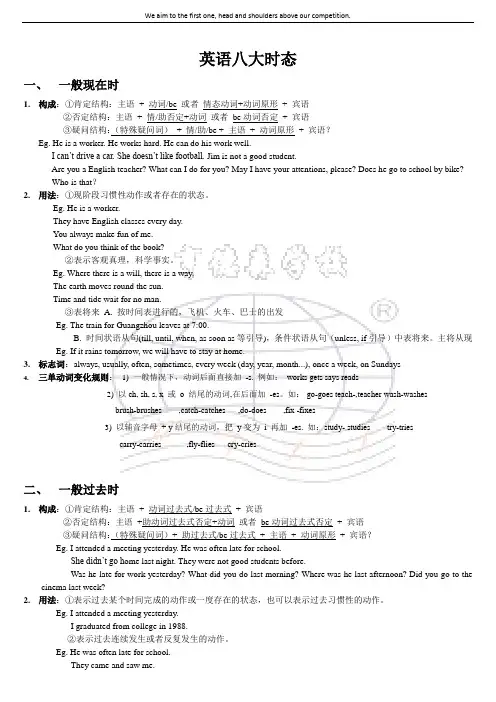
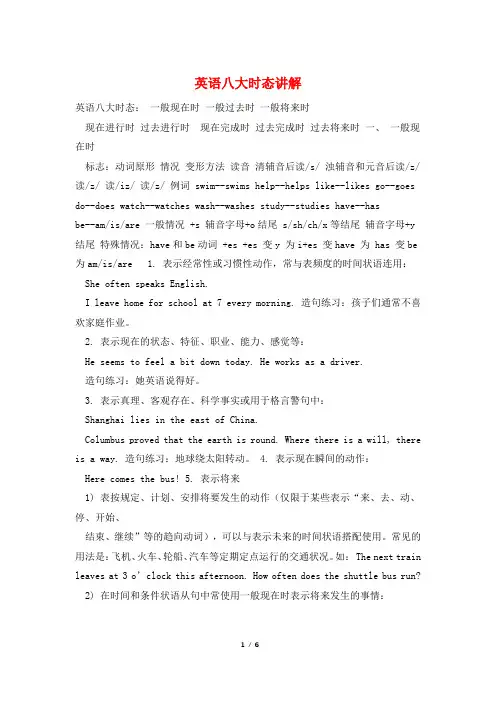
英语八大时态讲解英语八大时态:一般现在时一般过去时一般将来时现在进行时过去进行时现在完成时过去完成时过去将来时一、一般现在时标志:动词原形情况变形方法读音清辅音后读/s/ 浊辅音和元音后读/z/ 读/z/ 读/iz/ 读/z/ 例词 swim--swims help--helps like--likes go--goes do--does watch--watches wash--washes study--studies have--hasbe--am/is/are 一般情况 +s 辅音字母+o结尾 s/sh/ch/x等结尾辅音字母+y结尾特殊情况:have和be动词 +es +es 变y 为i+es 变have 为 has 变be为am/is/are 1. 表示经常性或习惯性动作,常与表频度的时间状语连用:She often speaks English.I leave home for school at 7 every morning. 造句练习:孩子们通常不喜欢家庭作业。
2. 表示现在的状态、特征、职业、能力、感觉等:He seems to feel a bit down today. He works as a driver.造句练习:她英语说得好。
3. 表示真理、客观存在、科学事实或用于格言警句中:Shanghai lies in the east of China.Columbus proved that the earth is round. Where there is a will, there is a way. 造句练习:地球绕太阳转动。
4. 表示现在瞬间的动作:Here comes the bus! 5. 表示将来1) 表按规定、计划、安排将要发生的动作(仅限于某些表示“来、去、动、停、开始、结束、继续”等的趋向动词),可以与表示未来的时间状语搭配使用。
常见的用法是:飞机、火车、轮船、汽车等定期定点运行的交通状况。
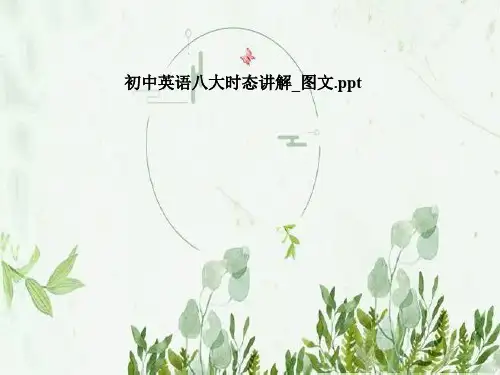
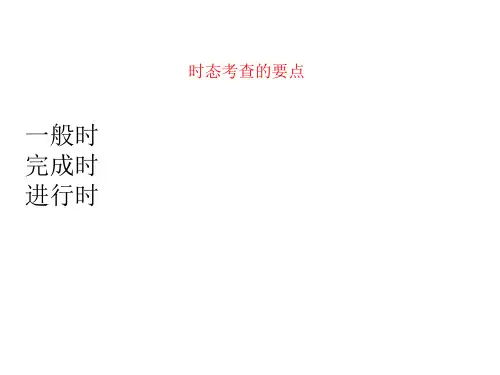
英语时态讲解1.一般现在时的应用(1)表示经常发生的动作或存在的状态.常用频度副sometimes,often,always,usually,seldom 以及时间副词every day/night/week/month/year,in the morning,in the afternoon,in the evening,at nig ht做状语.如:He often stays up late.他常熬夜。
We go home every month.我们每月都要回家。
I watch TV at night.我晚上看电视.(2)表示客观真理或永恒的状态.如:The earth travels round the sun.地球绕太阳旋转.Trees turn green in spring.春天树木变绿。
Liquid turns into gas when it is hot enough.足够热时,液体变为气体。
Practice makes perfect.熟能生巧。
(3)现阶段的状态。
常跟时间副词now连用。
如:He lives in Beijing now.他现在住在北京。
She is at home.她在家.They work in that factory.他们在那家工厂工作。
(4)习惯性的爱好或行为。
如:I like dancing while she likes singing。
我喜欢跳舞,而她喜欢唱歌。
We get up at six。
我们六点起床。
He studies very hard.他学习很刻苦。
(5)表示已经计划、安排好了或时间表上所安排,并且一定要做的事情。
用于这种句型的动词主要是瞬间动词:come,go,leave,arrive,begin,start,stop,close,open等.如:The train arrives at five past eight and leaves at ten past eight。
英语的八种时态1.一般现在时2.一般过去时3.一般将来时4.现在进行时5.过去进行时6.现在完成时7.过去完成时8.过去将来时•一般现在时He goes to school every day.•一般过去时He went to school last morning.•一般将来时He will go to school tomorrow.•一般过去将来时He said he would go to school the next day.•现在进行时He is doing his homework now.•过去进行时He was doing his homework when somebody telephoned him.•现在完成时He has already finished his homework.•过去完成时He had finished his homework before his mother came back.•表示现阶段经常或习惯发生的动作或存在的状态,或说明主语的特征。
①一般现在时句子中常有的时间状语:often,usually,sometimes,always,every (day等),once/twice,a (week等), on (Sunday等),never,in the (morning等)。
如:They go to the Palace Museum once a year.(他们每年去一次故宫)/ They often discuss business in the evening.(他们经常在晚上商谈生意)②表示客观真理、事实、人的技能或现在的状态时句子里一般不用时间状语。
如:The earth turns round the sun.(地球绕着太阳转)/ Light travels faster than sound.(光传播比声音快)③表示十分确定会发生(如安排好的事情)或按照时间表进行的事情,用一般现在可以表达将来,句子中可以有将来时间。
初中英语时态讲解ppt篇一:初中英语重点时态详解初中八种时态一般现在时的用法1)经常性或习惯性的动作,常与表示频度的时间状语连用。
时间状语:every…, sometimes, at…, on Sunday。
I leave home for school at 7 every morning. 每天早上我七点离开家。
2)客观真理,客观存在,科学事实。
:The earth moves around the sun. 地球绕太阳转动。
Shanghai lies in the east of China. 上海位于中国东部。
3)表示格言或警句。
Pride goes before a fall. 骄者必败。
注意:此用法如果出现在宾语从句中,即使主句是过去时,从句谓语也要用一般现在时。
例:Columbus proved that the earth is round. 哥伦布证实了地球是圆的。
4)现在时刻的状态、能力、性格、个性。
:I don't want so much. 我不要那么多。
Ann writes good English but does not speak well.安英语写得不错,讲的可不行。
比较:Now I put the sugar in the cup. 把糖放入杯子。
I am doing my homework now. 我正在做功课。
第一句用一般现在时,用于操作演示或指导说明的示范性动作,表示言行的瞬间动作。
第二句中的now是进行时的标志,表示正在进行的动作的客观状况,所以后句用一般现在时。
一般过去时的用法1)在确定的过去时间里所发生的动作或存在的状态。
例如:时间状语有:yesterday, last week, an hour ago, the other day, in 1982等。
Where did you go just now? 刚才你上哪儿去了?2)表示在过去一段时间内,经常性或习惯性的动作。